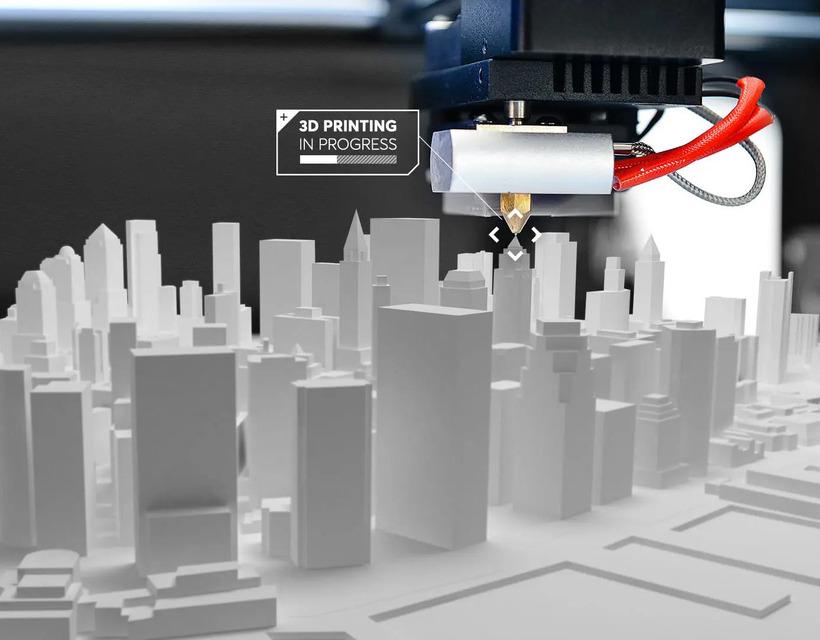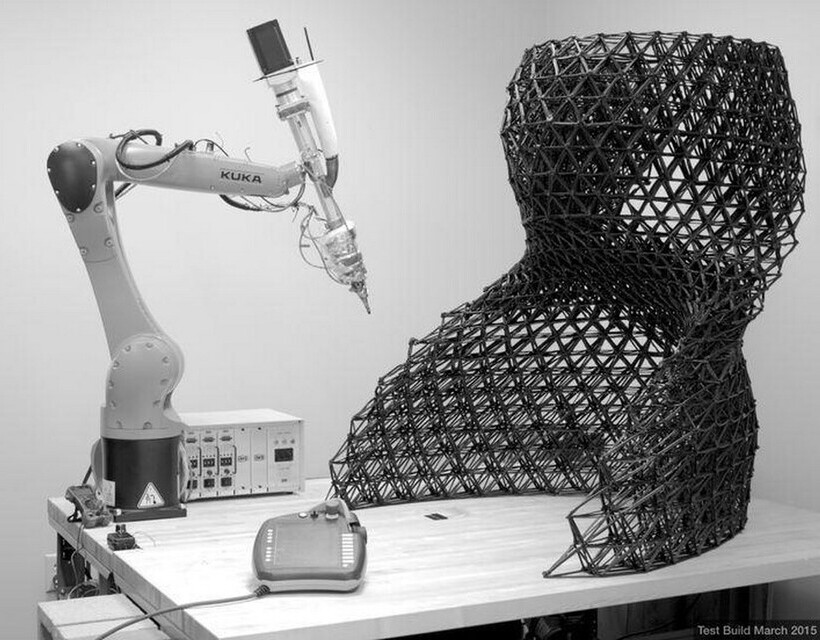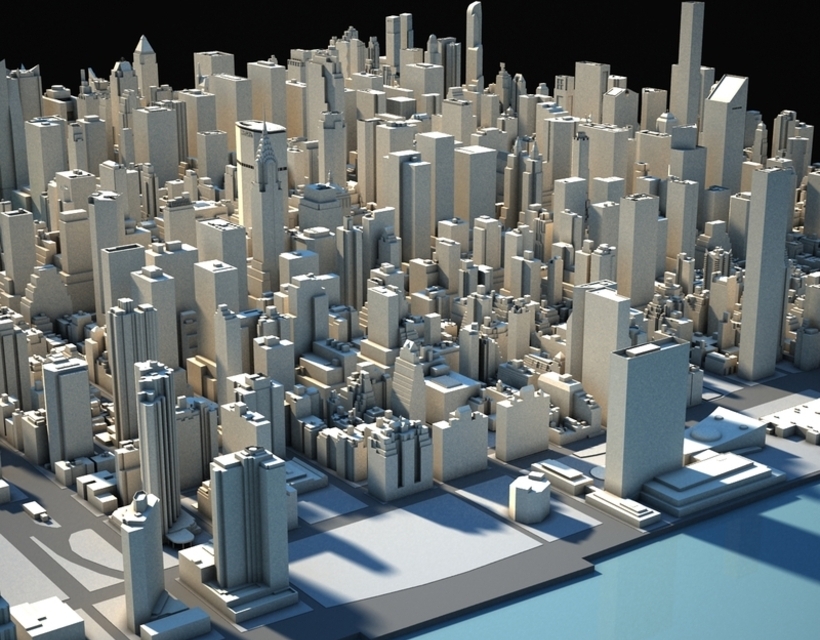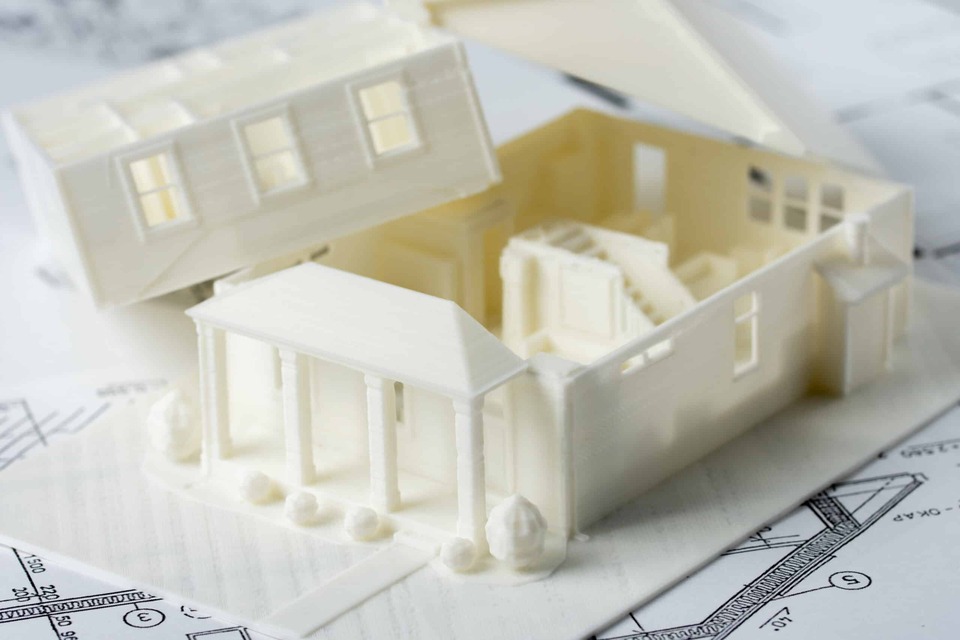Have you ever dreamed of living in a home made entirely with 3D printing technology? If so, you're not alone. 3D printed buildings are quickly becoming a reality, and it's time to explore what this new technology has to offer.
From its potential benefits to the challenges that come with it, 3D printing is shaking up the construction industry in ways we never imagined. It may be hard to believe but this is no longer science fiction - this is fact!
So let's dive into this brave new world of 3D printed buildings and see how it could become part of our future.
Overview of 3D Printing Technology
You've probably heard of 3D printing, but have you ever wondered what it's all about? 3D printing is a method of creating three-dimensional objects from digital models. It works by using a computer-controlled printer to lay down successive layers of material such as plastic, metal, or other materials in order to build up an object.
The process is gradual and precise, allowing the user to create complex shapes with a high degree of accuracy. It has become increasingly popular for hobbyists and businesses alike due to its low cost and ease of use. It can also be used to produce parts for medical applications, engineering prototypes, automotive components, jewelry pieces and much more.
With this technology becoming more accessible every day, it's no surprise that people are starting to explore its potential for building structures like houses and buildings!
Benefits of 3D Printed Buildings

You may be wondering what the benefits of 3D printed buildings are. Well, there are many advantages to this type of construction.
Design flexibility allows architects to create unique shapes and designs that would otherwise be too complex or expensive with traditional building methods.
Cost efficiency comes from reduced material waste and a decrease in labor costs as many steps can be automated.
Finally, 3D printing utilizes fewer raw materials while producing less carbon emissions than traditional construction methods, making it an environmentally friendly choice for builders.
Design Flexibility
You know what they say, when one door closes, another one opens. In this same vein, 3D Printing technology offers unprecedented design flexibility to architects, allowing them to explore new shapes and forms that were previously impossible to create.
This means that they can bring their most creative ideas to life in ways never seen before. They're no longer constrained by the limitations of traditional construction methods – instead, they're free to unleash their imaginations and come up with truly unique designs!
With 3D Printed buildings, your surroundings become a reflection of who you are as an individual or group – making it easier than ever for people to find a sense of belonging. This newfound freedom allows architects and designers alike to create structures that evoke emotion from the people who inhabit them; providing both comfort and inspiration in a familiar environment.
Whether you're looking for something modern or something classic, 3D Print technology has opened up a world of possibilities.
Cost Efficiency
By leveraging the cost-efficient capabilities of 3D Printing, you can bring your most ambitious design visions to life without breaking the bank. The potential cost savings that can be achieved through 3D printing are due to a number of factors:
- Reduced Labor Costs: With automated 3D printing, you don't have to pay for labor costs associated with traditional building methods.
- Automation and Robotics: Automated robotic systems such as those used in 3D printing require minimal human oversight, meaning less labor costs overall.
- Materials Savings: There is a reduced need for costly materials like steel when using 3d printed buildings since they use fewer resources and cause less waste than traditional construction methods.
- Increased Efficiency: By utilizing cutting-edge technology, you can quickly and efficiently produce complex structures at a fraction of the time it takes with traditional building methods. This means faster construction times and therefore lower overall costs.
- Sustainable Solutions: As an added bonus, 3D printed buildings are also more sustainable than traditional construction methods thanks to their use of fewer resources and production of less waste. This makes them both cost-effective and environmentally friendly!
3D Printed Buildings offer remarkable potential for bringing dreams to reality while still saving money in the process – allowing you to make your creative vision come alive on any budget!
Eco-Friendly Production

The eco-friendly production of 3D printed buildings provides a sustainable alternative to traditional construction methods. It allows you to make your creative vision come alive with minimal impact on the environment. By utilizing 3D printing technology, builders are able to reduce their carbon footprint by using less energy and fewer resources than traditional construction methods. This makes it an ideal choice for environmentally conscious developers.
With 3D printing, builders have the opportunity to create complex structures without relying on large amounts of materials from outside sources. This makes it more cost-effective in the long run. Additionally, since most 3D printing materials are made from recycled or recyclable materials like plastic and glass fibers, these structures can be produced with minimal waste.
In this way, 3D printing can provide a unique way for you to build sustainably while still achieving your desired aesthetic.
Challenges of 3D Printed Buildings

You may have heard of the potential benefits of 3D printed buildings, but there are also challenges that come with this technology.
Limited design options can lead to difficulties in creating aesthetically pleasing structures. Quality control is a major concern when it comes to 3D printed buildings, as it's difficult to guarantee that each layer will be perfect.
Finally, structural integrity is an issue due to the lack of reinforcement materials used in 3D printing processes.
Limited Design Options
3D printed buildings often suffer from limited design options, leaving many architects feeling restricted and frustrated. Because of their complex construction processes, it can be difficult to create anything more than basic designs using 3D printing technology. This can be especially challenging for modern architects who want to push the boundaries of what is possible with their designs. As a result, many feel as if they are unable to fully express their creative ideas and collaborate on unique projects that can benefit their communities.
It's easy to understand why this limitation can cause a great deal of frustration among those in the architecture field. Fortunately, there are ways around these restrictions thanks to advancements in 3D printing technology. By experimenting with different materials and techniques such as multi-material printing, designers are able to achieve more intricate results within the realm of 3D printed buildings.
With these new possibilities come an exciting opportunity for architects—the potential to create truly inspiring works of art that bring joy and value into our lives.
Quality Control
Ensuring quality control is a major challenge when it comes to 3D printed buildings, as even the slightest mistake in construction can lead to disastrous results. So, what measures should be taken to ensure that each building is up to code? Here are 4 steps you can take:
- Utilize automated systems for testing the strength of materials used in 3D printing.
- Inspect the interior and exterior of all structures before approval and installation.
- Make use of top-of-the-line software for accurate simulations and predictions of how a structure will perform under various conditions.
- Ensure that all safety regulations are followed at every step of the process, from design to completion.
These steps not only ensure that your 3D printed buildings meet all necessary standards but also give you peace of mind knowing that everything was done right—from conception to delivery! By taking these proactive measures, you can have confidence in your projects as well as build a sense of trust with your clients who want assurance that their investments are safe and sound.
Structural Integrity
To ensure a structurally sound 3D printed building, it's essential to focus on structural integrity. Interestingly, studies show that buildings constructed through 3D printing are actually up to 60% stronger than traditionally built structures.
With this fact in mind, it is clear that there is great potential for the use of 3D printing technology in construction projects around the world. In addition, 3D printed buildings can be customized more easily than traditional methods due to their lack of complex parts or geometry. This allows for more efficient and cost-effective designs that can accommodate changing needs and demands.
For those looking to make an impact with their construction projects – both aesthetically and environmentally – investing in 3D printed buildings may be the way to go. Not only does this technology provide strength and stability, but it also offers endless possibilities when it comes to customization and ingenuity.
Furthermore, with greater control over materials used during the production process, builders have the option of creating ecologically friendly structures that are not only strong but also sustainable over time.
Potential Applications for 3D Printed Buildings
You can utilize 3D printed buildings for a variety of purposes, from residential housing to commercial structures. By using 3D printing technology, architects and builders have the ability to create unique and complex designs with greater precision than ever before.
From large-scale skyscrapers to small studio apartments, 3D printing makes it possible to construct virtually any type of building imaginable. Buildings can be designed with intricate details that wouldn't be possible with traditional methods. Construction costs can be reduced significantly due to the speed and accuracy of 3D printing. The environment is better protected as fewer materials are needed compared to traditional construction methods.
Using 3D printing technology in construction opens up new possibilities for people around the world who may not otherwise have access to quality housing or other structures. It also allows people everywhere to express their creativity through building design while providing them with an experience that will add value and comfort to their lives—making them feel connected and part of something bigger than themselves.
Regulations and Licensing
Establishing regulations and licensing for 3D printed buildings is paramount to ensure safety, just as the old adage goes 'measure twice, cut once'.
As 3D printing technology continues to advance, it's important that construction standards are kept up with the times. This means that governments should invest resources in creating laws that will regulate 3D printed building constructions. Such regulations may include inspections at each stage of construction or enforced design plans and materials used in order to guarantee quality and safety.
The implementation of such regulations can be an involved process that requires collaboration between lawmakers, engineers, architects, government officials, and other building professionals. Ultimately though, these efforts are necessary for promoting safe building practices while inspiring confidence in the public about the use of this new technology.
Thus creating a sense of community where everyone can feel secure knowing their homes have been constructed safely and reliably by trained professionals.
Examples of 3D Printed Buildings

Take a look around and marvel at the remarkable 3D printed structures that are now a reality, providing us with safe and reliable homes.
From entire buildings to individual components like walls or stairs, 3D printing can create complex forms quickly and efficiently.
For example, in 2019, the world's first 3D printed office building was completed in Dubai. This 2-story structure used a special proprietary mixture of concrete along with fiber reinforced plastic to construct its unique shape. It stands as an example of how this technology is revolutionizing construction projects all over the world.
Many countries have begun experimenting with creating social housing out of 3D printed materials since it is much cheaper than traditional methods. The future promises even more possibilities for sustainable living where our homes can be built quickly and safely using recycled materials.
All in all, it's amazing what we're able to accomplish through this new technology!
Potential Impact on the Construction Industry
The potential impact of 3D printing on the construction industry is huge, revolutionizing the way we build homes and other structures. With this new technology, it's possible to construct buildings faster and more efficiently than ever before.
3D printing offers a more affordable solution, with materials that are much cheaper than traditional methods. It also reduces waste in the process, since any excess material can be reused or recycled. The cost savings alone make 3D printing an attractive option for many businesses and individuals looking to reduce costs in their projects.
In addition to its economic benefits, 3D printed buildings offer environmental advantages as well. Construction sites produce large amounts of dust and debris which can be hazardous if not properly managed. But with this technique, there's no need for excavating or disposing of materials—allowing for a cleaner building site with less disruption to the natural environment around it.
This could have far-reaching implications for communities all over the world who rely on clean air and water sources for their everyday life.
Future of 3D Printed Buildings
You could discover the potential of 3D printing when it comes to constructing structures, as this revolutionary technology can offer a more cost-effective and environmentally friendly building solution.
With 3D printed buildings, you'll be able to explore a world of unlimited possibilities:
- 3D printed buildings will allow for new architectural designs that aren't possible with traditional construction methods.
- The use of 3D printing in construction could increase efficiency and reduce costs associated with labor and materials.
- The environmental impact of 3D printed buildings is minimal as they require less energy, water, and raw materials than conventional structures.
This technology has already begun to transform the construction industry by making it easier for architects to create unique, sustainable structures quickly and efficiently. As 3D printing continues to advance, its potential applications in the building sector are only going to grow—which means there're a lot of exciting opportunities ahead!
Conclusion
You've explored the world of 3D printed buildings and discovered that this technology has the potential to revolutionize the construction industry. While there are some challenges to overcome, like regulations and licensing, it's clear that 3D printing can provide significant benefits - from faster construction times to more cost-effective projects.
It's a fascinating theory, but one that is becoming increasingly more tangible as we witness the rise of 3D printed buildings around the world. So, if you're looking for an innovative way to build, why not investigate further? The truth may surprise you!
